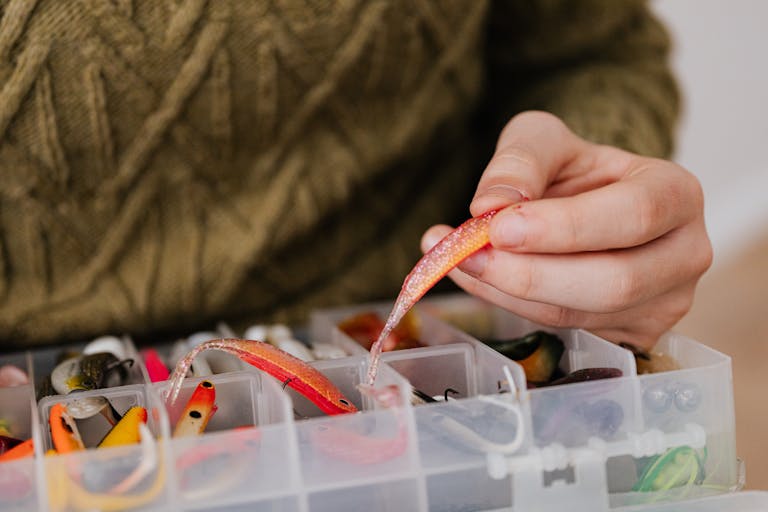Why Miniature Fluffy Cows Are Perfect For The Small Homestead
For most people who are interested in farming in this day and age, they’re more interested in a small farm for the purpose of self-sufficiency. This unfortunately, often means that cows are simply not practical. A typical dairy cow is a huge animal that requires a lot of land and food, much more than a small family can provide for them on a mini homestead.
Full size dairy cattle also produce far too much milk and meat for the average family unless you plan to sell it, which is often difficult due to regulations. This leads many families to acquire goats instead, but goats aren’t cows, and they aren’t always the best substitution in some cases.
However, if you were hoping to add cattle to your homestead, then you’re in luck! Mini cow breeds are becoming more popular in the United States, and they often provide just what the average homesteading family needs for a small family farm.
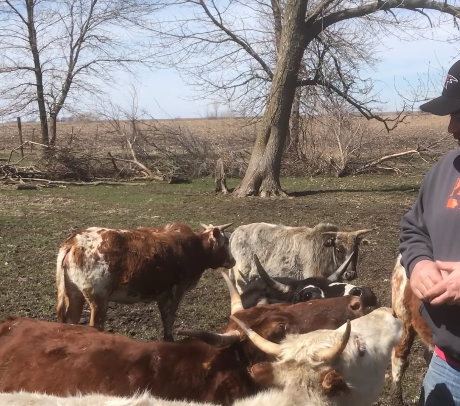
Miniature Cow Facts
- Smaller and easier to handle
- 36 -48 inches in height
- Weighs 500-800 lbs.
- Provides 1 & 1/2 gallons of milk
- Typically very docile and friendly
Miniature cows tend to provide just enough milk and meat for a family homestead, and they’re also easier to manage than full-size cows. Wrestling with a 1,200 pound animal is a real chore, but a docile and friendly miniature breed which comes in at half the size is much easier to deal with. Cows are also surprisingly great low maintenance farm animals if you’ve got the space!
However, it should be noted that if you’re seeking cattle for a for profit farm, then miniature cows may not be a good pick. While they are very feed efficient, they obviously don’t provide as much meat and milk for you to sell, and if you have the land, then you might go with full-size cattle instead.
If you’d prefer to sell the cattle live though, then you could make a good amount of money breeding them. This is especially true if you import them to a state with out many breeders, because a mini cow calf can fetch $2,000 to $3,500 based on the variety and demand in your area. That’s quite a bit better than selling them for meat!
As more and more hobbyist farms spring up, the demand for mini cattle will rise. As these farms are not interested in milking as much profit as possible from their animals, but instead are worried about raising sustainable, humanely raised, and healthy grass-fed beef for their own family.
How much space do I need to raise miniature fluffy cows?
One of the most attractive aspects of miniature cows is that they don’t require nearly as much land to graze on as full-size cattle and they are more feed efficient. By that I mean that it’s easier to turn the food you feed them into usable meat than for a larger breed cow.
For a regular cow, if you have very good pasture land, you could expect to place one cow per 1.5 to 2 acres, but even then, supplemental feeding will likely be required for this animals. However, for a miniature cow, they can exist on as little as a half acre! This makes them very attractive for small farms. Some breeds are even more like goats, in that they can eat a wider variety of brush and vegetation besides just grass, making them a very attractive animal for a budding homesteader.
How much does a mini cow cost?
A miniature fluffy cow, like the Highland or Belted Galloway, will run you anywhere from $3,000 to $5,000+ depending on different conditions. Females generally cost more than males, but the price could also be higher if there aren’t many of them in your area. There are also “specialty colors”, which could run you more, such as the “Panda” variety.
Many breeds are still rare in the US and you may even have to travel out of state if you’re very particular about the kind you want. However, some other less desirable breeds have a much better price tag and can be had for as low as $1,800. Most of these animals are actually bred as designer pets and that leads to higher price tags.
What kind of mini cow should you get?
There are also quite a few different variaties of miniature cows, and they all have their strengths and weaknesses. If you’re considering purchasing some mini cows of your own, then I’d advise you to spend some time learning about the breeds and choosing the one that best fits your situation.
Miniature Belted Galloway
This hardy breed is a great dual-purpose milk and meat producer, ideal for the small family homestead. They reach around 42 inches (measured at the hip bone) at their full-size, and their thick coats do a great job of insulating their bodies.

Animals with good insulation in their fur don’t require as much energy from feed in the winter, and you may be surprised to find that this little creature eats surprisingly little during colder months. That’s good news for you if you want to save on winter feed. Various tests have shown that this breed uses the least amount of food per kilogram of weight gain, making them great at turning feed into usable beef.
Belties are also kind of like goats in that they aren’t picky eaters. While many cow breeds feed strictly on grass, the mini Galloway is a cow version of a brush hog. Their ability to eat what is typically less digestible flora allows them to flourish in conditions that aren’t the best.
These cows are very docile and naturally hornless, which is safer for both you and your other animals. Plus, they have great meat which is lean but also well-marbled. You’ll also find that they dress out at about 60% of their body weight, providing a large amount of meat for their size.
Mini Dexter Cow
The Mini Dexter are a very sweet breed of cow, and they are quite long-lived. You can expect your Dexters to live for up to 18 years if you choose this breed! They’re also easy to breed, and they’re known for having easy births, which could make them a great choice if you’re new to farming.
These cows are on the slightly larger size of mini cattle, reaching 47 inches in height, but that’s still smaller than a normal size cow. They also have horns, which could be a deal breaker for you, though it’s unlikely to be a problem with this sweet and friendly breed.
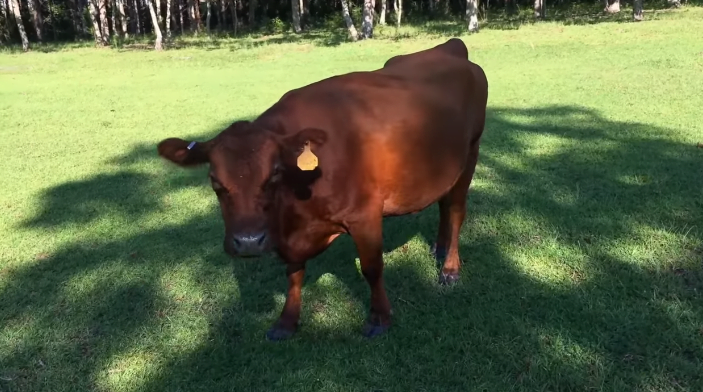
Dexter’s are great foragers, and they can thrive even when pastures are not at their best, but they require a lot of water to keep up their milk production. So, if you don’t have a reliable natural source for water, then make sure you can provide plenty to them in stock water tanks.
If you are looking for a miniature cow that gives an amazing amount of milk for their size, then look no further. The Dexter cow, despite being a miniature is renowned for their milk production. They can give an average of 2.5 gallons per day, but in some cases, even double that amount! That’s good news if you love to make your own cheeses and butter. (The milk also has an excellent butter fat content in the 4-5% range by the way!)
However, Mini Dexters are also popular for their meat production ability. These cows put on weight quickly, much quicker than Galloways or Highlands. In fact, these cows can reach 400 pounds in just 14 months thanks to their feed efficiency.
Mini Jersey Cows
The Mini Jersey cow is a little heftier when it comes to miniature cow breeds, topping out at around 700-800 pounds, but they offer fantastic milk production. They were actually bred to be a little bit larger on purpose to increase milk production, and if dairy is your primary concern, then they are worth considering.
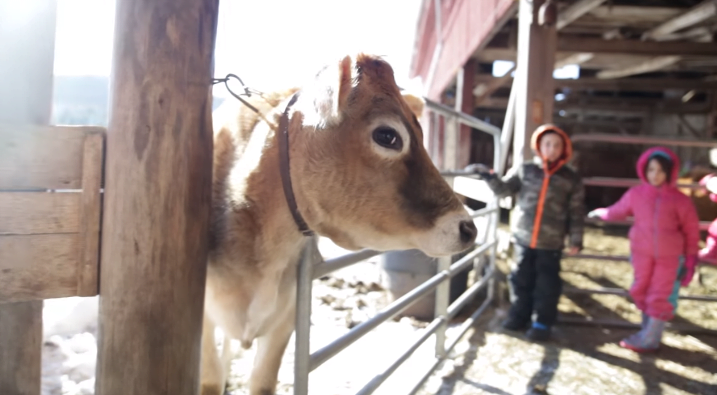
This breed can produce 2-4 gallons of high butter fat content milk per day, while still utilizing less feed and acreage than a full size cow would. While the miniature variety is definitely less aggressive than their larger Jersey counterparts, they still aren’t the most docile breed on the list, and you might want to handle them carefully, especially the bulls.
These cows also lack the thick coats of Galloways or Highlands, and if you live in a harsh climate, then you may need to provide them some supplemental heat, especially the calves.
Miniature Fluffy Cows – The Scottish Highland!
These cuties are probably one of the most well-known miniature fluffy cow breeds. They have distinctive shaggy brown coats, and people can’t get enough of how adorable and furry they are. So, part of your farm plans involve farm tours or renting your animals out for parties, then you might consider this breed. Not only are they a useful homestead breed, but they are always a crowd-pleaser.
While this breed is a little slower growing than something like Dexter cow, they do offer other benefits. For starters, their long coats make them very feed efficient in winter, and they are extremely hardy, making them a good choice for those who live in harsher winter climates.
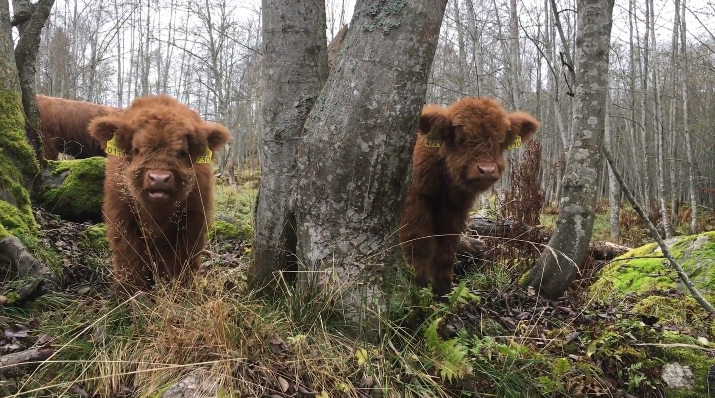
They’re also a good dual-purpose breed, providing well-marbled and lean meat as well as decent milk production, though not as much milk production as other minis. Expect about a gallon and a half per day from them, which is more than enough for the average family. They also calve easy, making them a great animal for beginner homesteader to learn their new trade.
Highlands are also similar to the Galloway breed in that they are great at clearing brush. This means that they can feast on land that normal cows would have difficulty with.
There are actually even more miniature breeds, including the miniature Zebu and the Panda cow, but these are some I feel are most practical for a mini homestead. I would urge you to do more research and to see which ones are being bred in your area, though even if there aren’t any breeders near by there likely are in a neighboring state.
Miniature cows are amazing and useful creatures, and you should consider them if you’ve got even as little as 5 acres or so, because a small herd can be sustained on very little land.

Bob learned about farming from his grand dad. So, the decision to leave the city and start homesteading was not a difficult transition. He now lives with his wife and two kids on their 30 acre property in Ohio.




